DJ Music Mixer - DJ Mix Studio
Create seamless mixes with advanced features and powerful tools. Elevate your DJ skills now!
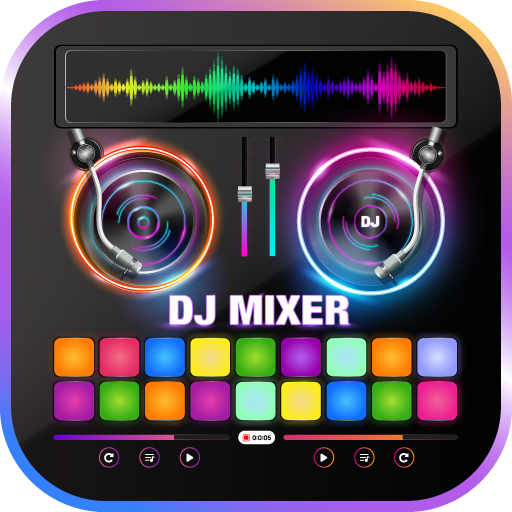
- 1.1.1 Version
- 1.4 Score
- 3M+ Downloads
- Free License
- 3+ Content Rating
Check out the DJ Music Mixer - DJ Mix Studio app! Rocking beats and professional song mixing await you with this music maker and song mixer tool. Whether you're a seasoned DJ or just starting out, this app offers a wide range of features to help you customize your music mixes with cool sound effects, diverse beats, and an array of drum pads.
Here are some of the main highlights of this DJ music maker app:
🎶 Seamlessly blend tracks, adjust tempo, and create smooth mixes like a pro DJ with the DJ Mixer & Music Mixer & Song Mixer feature.
🎶 Dive into the world of beat making and audio creation with access to various beats and drum kits through the Beat Maker & Audio Maker function. Create your dynamic beats using virtual instruments and drum pads.
🔮 Wondering how to make beats? Simply define your vibe, create a bass line, add in drum pads, mix in melodic elements, and master your beats for that perfect sound.
🎶 Explore over 20 drum pads offering different drum kits from electro drums to acoustic drums, allowing you to create catchy music effortlessly.
🎶 Elevate your mixes with a collection of diverse sound effects to add depth and uniqueness to your music creations, setting it apart from the crowd.
🔥 Additionally, enjoy setting up Hot Cues on each deck, experimenting with loops, accessing sample packs, utilizing the five-band sound equalizer and Bass Boost, and much more.
What makes this song mashup maker app truly shine?
✔️ Top-notch beat music and sounds
✔️ Swiftly mix and mashup numerous songs
✔️ Remix and create outstanding mixes with various sound effects
✔️ Effortlessly become a successful DJ music producer
✔️ Conveniently access all music on your device's playlist
✔️ Record your mixes with the built-in recorder and share them on various platforms
✔️ Offers a wide range of music styles like EDM, house, and electro
✔️ User-friendly design with colorful drum pads and simple operation
✔️ Supports multiple languages
Don't miss out on the opportunity to create awesome songs and beats - seize the moment and become a stellar DJ mix music connoisseur! If you have any queries about this music creator app, feel free to reach out to us. Thank you for choosing the DJ mix songs app! 🎧
23 Advanced DJ Mixing Techniques to Improve Your Set
by Noah Feasey-Kemp
TL;DR - Advanced DJ Techniques#
- Practice as many DJ mixing techniques as you can.
- Use tempo and key to achieve a smoother sound.
- Experiment with all styles of music, track selection, and a broad tempo range.
- Push yourself out of your comfort zone to expand beyond basic mixing techniques.
- Software like DJ.Studio provides a powerfully unique perspective on how to build DJ sets.
Level Up Your DJ Sets With These Advanced DJ Mixing Techniques#
Check out these DJ chops to improve your sets and impress your audience. (Remember, you should also learn about these 7 Bad DJ Mixing Mistakes to Avoid!)
1) Key Matching and Harmonic Mixing Technique#

One of the most powerful advanced DJ mixing techniques is using key matching and harmonic mixing.
There are 24 potential keys - 12 minor, and 12 major. Each of these keys connects in a certain way, some of the keys have strong relationships, whereas others are weak. A vital component of seamless mixing is making sure the keys of two tracks are compatible - which is called harmonic mixing.
The easiest system for DJs to incorporate harmonic mixing is the Camelot Wheel. This wheel shows you the strongest connections to make for each type of key. All you need to do is work out what key one track is, and then you can see which other keys will match well.
You don't necessarily have to match tracks in strictly the same key, as each key connection offers a different type of energy or mood change. Understanding how you can manipulate this concept is one of the most valuable advanced DJ mixing techniques that will set you apart from other DJs.
2) Understanding Gain Staging#

Another important thing to understand is how to correctly manage gain levels. This is one technical aspect of mixing that DJs often overlook. Sure, it's not the most glamorous or exciting part of DJIng, but it goes a long way in making you sound professional, and not blowing out the speakers.
Avoid red-lining either the channel fader or the master track. If you see any of the volume indicators going into the red then it means you have the track gains too high and are distorting the signal. This degrades the audio quality and makes a nasty sound.
Typically people end up red-lining the channels because they are trying to get more volume out of the mixer. In reality, it just ends up damaging and hyper-compressing the audio.
The key to good gain staging is to make sure the channel meters are showing the volume just below the red, this way you are maximizing volume without clipping the channel. If you need more volume, you should turn the gain up in another stage of your audio setup. If this is in a club, the PA and speaker rig need to have their volume boosted. If you are mixing at home, then you need to turn the up volume of your speakers, headphones, or amplifier.
This keeps your mix sounding clean, and also prevents tiring your listener's ears. Sure, you can use this distortion as a creative effect, but when you get to max volume, you lose dynamic range so it's hard to come back in with impact when everything is already maxed out.
3) Multi-Genre Mixing#
This is more conceptual than a technical technique, but you should experiment with multi-genre mixing. So many DJs get stuck in labeling themself as "a techno DJ", or "a DnB DJ", and limiting themselves in what they play. Sure, sometimes a nightclub will want a specific genre set, but when you have more creative freedom then it's good to experiment with variety.
You'd be surprised at how easy it can be to mix completely random genres together, without even needing to use sophisticated techniques.
Most genres are connected in some way, and some connections are surprising.
You should listen to as much music as you can, and create a large music collection that spans all genres. Don't limit yourself by only listening to and mixing a few genres. Push yourself to explore music outside your comfort zone, and try to listen to new genres that you've never heard of.
The wider your musical tastes are, the more flexibility you have to express yourself as a DJ. Mixing all different genres also makes your djing skills more versatile too, you can take things you learn from mixing house and incorporate them into mixing drum and bass or hip hop, etc.
See my full guide on this topic here: DJ Mixing Different Genres - The Ultimate Skill Guide
4) Three or Four Deck Mixing#

While most DJs only use two decks to mix, there's something to be said about using 3, or even 4 decks when mixing. Sure, juggling this amount of tracks takes work and a lot of practice, but it can make for a super slick performance if you pull it off.
For inspiration, check out this God-like 3-deck mix from techno icon Jeff Mills: Jeff Mills / Exhibitionist Mix. This shows you how you can make three decks work together.
Even if you don't end up performing with three of four decks, it's a good thing to practice because it makes you work harder and pushes you out of your comfort zone. When you get used to mixing with three or four decks, it makes you feel much more skilled and advanced when mixing on a standard two-deck setup.
Not all DJ software makes this possible, although if you have enough decks and a multi-channel mixer then you can pull it off.
5) Practice Beat Matching#

You need to learn how to beat match. With today's technology, it's really easy to get stuck in a rut of relying on automatic tempo-matching tools. Sure, this is really helpful, and it makes it quick and easy to get tracks matched, although you shouldn't rely on it all the time if you want to DJ professionally.
Beat-matching isn't that hard once you've spent some time practicing the basics. Learn how to beat match, learn how to count beats, and learn how rhythms work. All of these skills feed into a DJ's ability to create fluid mixes. Beat-matching is at the core of Djing, so learning how to do it manually and properly is essential if you want to take it seriously.
You don't always need to match manually though. If you are working with DJ software like DJ.Studio - you have access to auto-matching features. This does the boring work for you so you can focus on the creative and expressive elements of your mix.
6) The Seamless Mix#

Mastering a seamless mix technique is a valuable skill, and can make for some super groovy listening and dancing. A lot of inexperienced DJs tend to mix tracks quite messily. This can be jarring for the audience, as they will hear too many musical elements clashing around.
When you listen to the best DJs, then can mix two tracks together and make it seem like one track, there are a few techniques to achieving this type of mix.
First, it's important to use compatible keys. Secondly, you need to have the beats matched absolutely perfectly, both BPM and the position of the beats.
Next, you need to time the mix in a way that both kick drums and the arrangements aren't clashing. You need to carefully line up the intros and outros (sometimes called mix-in and mix-out zones). These parts of arrangements have fewer elements, and more space to be blended together with another track. This can be done by cueing one kick drum to the other - using DJ software or a DJ controller.
You need to learn the arrangements of your music library and work out which sections allow for a clean mix.
Then it's just a matter of mixing a smooth transition with the faders! If you pull off a seamlessly smooth mix, your DJ set will sound amazing!
7) Infinite Loop Mixing#
Loop mixing is a powerful technique that has been made possible by digital technology. You can easily loop sections of a track into 2, 4, 8, 16, 32, or other bar-length phrases - ultimately it depends on the structure of the arrangement. Most DJ software has an auto loop feature which makes this easy.
If you loop sections of two different songs, you can get creative with volume, filters, and effects when playing live to create a real-time remix. Practicing this technique opens up a lot of options. it's a great technique for mixing house music!
What I suggest you do is find two tracks that work well together, and loop both of them. Then just spend some time playing with the two loops and working out how you can manipulate them to create new grooves, build-ups, arrangments, drops, and transitions.
8) Get Creative With Loops#
You can get even more creative with loops than just looping a 2 or more bar phrase. Depending on the capability of your DJ gear, you can create tiny loops. Start with a loop, and then keep shortening it until it gets to the smallest loop possible.
Depending on your gear, this could become a tone, almost like a synthesizer. You can then use this tone as an instrument, flicking the crossfader and channel faders, almost to create a rhythmic scratching effect. It's not scratching in the traditional sense, but works in a similar way and is a great technique for creating more dynamic DJ performances.
You should also learn How To Add Samples To DJ Mix
9) Tempo Changing Transitions#

Changing tempos is a great way to manipulate your audience's groove - whether you speed it up or slow it down. This is also called a tempo transition mix.
Manipulating the BPM has several advantages. Beyond simply changing the speed of your audience's dancing, you can also use it to move between genres, in a way that wouldn't normally be possible if you didn't change the tempo.
For example, you could be playing some house track at 120 BPM. Then you slowly increase the tempo to 127, which gets the audience dancing faster, then as the house track builds up to a climax, you drop it into a garage beat - which is typically at 127. You don't have to use this mehtod only when you mix house music, it can be used for any genres!
You can then take this tempo change further, speeding the garage up from 127 BPM to a driving 135. This brings it up to the speed of rolling industrial techno, which you can then slowly bring in. You can see how you can use this to go from DJing house music or tech house, and moving your DJ set up to higher tempos!
With this technique, you can see how you can quickly bring the speed of the dance floor up, and at the same time open up options for changing between genres.
Get some specific techniques with these 9 DJ Tempo Change Techniques!
10) Polyrhythmic Mixing#
This is one of the more advanced DJ tips out there, but using a polyrhythmic mixing technique can create some really interesting and unique grooves. Typically, most rhythms in dance music and electronic music use a 4/4 beat. That means they are counted as 1 - 2 - 3 - 4.
This is all well and good, but what if you experimented by blending rhythmic elements that used other time signatures, like 3/4, or 5/4? This can be done by scratching, using a short loop as explained in tip 8, exaggerating beats with gain, or even playing music that uses these odd time signatures.
It can take a while to get your head around, but it's one of those advanced techniques that will really set you apart from the crowd.
To practice, play a 4/4 track, then make a 3-beat loop in the other deck and listen to how it changes the groove. Line up the first beat with the first track, then fine-tune the volumes and crossfader of the other track and get groovy.
11) Advanced Transition Effects#

A core skill for any advanced DJ is to master all of the available tools and learn how to use and combine them effectively. There is a wide variety of effects and processes available to DJs beyond a standard channel volume fader.
Get to know all the effects you can, and work out how you like to use them and how you can use them to change the sound of a groove.
Make sure you understand and know how to use all of the effects on the following list:
Reverb
Echo/Delay
Chorus
Flange
Filters
EQ
Looping
Stutters
Gates
Vinyl Break
Spin Back
This is the core of your toolkit for transitioning and getting creative with beats. Experiment with these, learn how they work, and put them into practice.
I'd even recommend working out how you can combine these effects - this can open up some really cool options when it comes to mixing and making transitions.
Find out more - DJ Transition Techniques Every DJ Should Know!
12) Avoid Cluter - One Hook At A Time#
Mixing arrangements cleanly and precisely is something that sets DJs apart from others. New DJs tend not to care so much about which point of a track they start crossing over.
This can result in clutter, overwhelming mixes where there are two hooks bashing against each other at the same time, too many kick drums, and even worse, two vocals clashing. For example, if you DJ house music, you want to make sure that the vocals and bass line for each track aren't competing with eachother. This goes for mixing music of any kind!
Consider the mix-in and mix-out zones for your tracks. Don't just cut them together at any random point. You should have a clear intention of when, and why you're going to transition between tracks. Even if you're mixing minimalistic genres like deep house music, you need to be careful.
The key to getting this right is by listening to your tracks in their entirety, and learning how they are arranged. If you can add cue points to your library in your software, then this is a great move.
Otherwise, just try to remember where things come in and out of an arrangement, and make sure you don't play two songs and let too much noise happen at once.
This can all be achieved with phrasing - What Is Phrasing in DJ Mixing?
13) Cross Faders vs Channel Fader#
The crossfader and channel faders are both concerned with changing the volume of your tracks, however, they both do this in a different way, and you should maximize their nuances to your advantage when mixing.
Channel faders are more subtle and control each track one at a time. This is a great way to bring a new track in without changing the volume of the current track playing.
Crossfaders control both volumes at the same time, so when you turn one track up, the next track turns down. This is useful for making quick, rhythmic chops, although you can also use it to slowly crossfade between two tracks.
Experiment with both fader types, and listen to how they both sound different and change the volume in their own way. Understanding these mixing techniques will give you a smoother mix every time.
Learn 5 DJ Crossfade Techniques - Mix Like A Pro
14) Advanced EQ Theory - Cutting Beats Boosting#
It's easy to get overexcited with the EQ boosts. We all love to slam the bass line with a fat boost to the subs, although this isn't always the best EQ mixing technique, and can make things harder later down the line.
Boosting takes up headroom, which you only have so much of. If you boost, then you end up in a downward spiral of competition.
You boost, so the next song sounds weak, so you need to boost that, then the next one sounds weak, so you want to boost, but it's already boosted... and so on.
It's better to cut the other two EQ bands rather than boost one. It has the same effect although in reverse, in that it makes one frequency band more prominent.
If you lower the high frequencies and mid-frequency volume, the low-frequency volume pops out more, but you don't use up your headroom, and there is more space to bring frequencies in without excessive competition.
15) Use Hot Cues, and Prepare Your Library#
Set hot cue points in your software so your tracks are ready to be dropped into the hook at any point.
Library preparation makes your life easier down the line. Spend some time organizing your library, labeling BPMs and keys, and setting cues.
Hot cues let you add cue points at any place in the track, so you could cue up the intro, the start of a build-up, the drop, or any other point of interest so you can get it quickly lined up when you're in the mix.
Find out more: DJ Cue Points: The Ultimate Guide
16) Record and Listen to Your Sets#

This is something that many DJs fail to do in the early days. Listening back to your own mixes is highly important because it lets you hear things for how they really are.
When you're mixing live, you're so focussed on the mixing at the moment that you might not really hear how the set sounds to the audience.
You need to give yourself the perspective of being somebody in your own audience. Imagine you were just a dancer in the club, and you were watching your own DJ set.
This way you can get critical about your DJ style, and hear things that you need to improve on.
17) Avoid Repeating the Same Mix very Set#
It's easy to get into the habit of finding two songs that mix well together, then dropping the same mix in every set. Sure, sometimes it's nice to perfect a blend between two songs, maybe in the practice room.
But if you play to a crowd, or regularly DJ in public or on a radio show, your sets will quickly become stale if you use the same mixes every time. Imagine listening to the same house music production a thousand times...
Push yourself out of your comfort zone.
Reshuffle your playlist, and make sure you're constantly on the hunt for new tracks to bring into your mixes.
Sometimes it's worth culling some tracks that you overplay for the sake of keeping it fresh.
How To Record A DJ Mix: 3 Best Methods
18) Practice With Intention#
There's the old cliche, "practice is good, but perfect practice makes perfect". This is to say, you need to be conscious of the things you practice.
When you get around to having some mixing practice time, make a list of certain things and techniques you want to practice.
It's good to mix randomly and for fun, but you will progress your skills quicker if you dedicate your practice to particular techniques.
Set yourself goals, like:
I'm going to practice beat matching for 15 minutes
Practice transitions for 15 minutes straight
Spend 15 minutes experimenting with the faders on my DJ controller
I'll spend 30 minutes understanding how key blending works.
Make a list of the things you want to master and tick them off as you learn them.
19) Scratching#
Scratching is one of those DJ skills that everyone wishes they were masters of. Using scratching is a great way to bring an extra level of performance and expression to a dynamic performance.
Scratching is an art form in itself, and some DJs dedicate themselves to building next-level scratching techniques. You don't have to become a scratch artist, but learn how you can incorporate scratching into your performances.
20) Practice Mixing 1 Track Per Minute#
This fast-paced challenge will increase your speed on the decks. Set yourself a goal of making a mix where you change tracks every minute. Doing this will keep you on your toes, and level up your mixing skills by pushing you to be fast.
21) Experiment With Song Remixes#
If you love a song, why not look at what remixes are out there? You're bound to be able to find some interesting new remix that gives you a fresh take on your favorite tracks!
22) Look Into Music Theory#
While some snobby people in the music scene would argue differently, DJs are actually musicians, so learning music theory can be a big help.
Music theory is a deep field, and while it isn't necessary for DJs to learn it, it can be helpful, as having a deeper understanding and connecting with music opens your mind.
Research things like melody, harmony, chords, keys, and rhythm. If you understand these concepts you will find mixing easier, and you'll be able to get more creative with it.
23) Learn How To End Your Set#
Everyone loves mixing, but (and I know this personally) nobody likes to end their set. Most DJs just want to mix for hours on end, especially if they have an audience and are in the groove.
Unfortunately, it's rare that you'll get a 12-hour set - I've been lucky to do this a few times, although usually, you'll have to end after playing for an hour or two.
Working out a way to end your sets in style brings a nice touch to your performances. If you're being followed by another DJ, why not cue a track that suits their style so they can easily drop in the next track?

Summary- Mix Like A Professional DJ#
If you incorporate these DJ tips and tricks into your DJ set then you'll sound like a pro in no time. Remember, using software like DJ.Studio can be a great way to practice these tips and refine your mix techniques. Being a non-linear DJ tool, it gives you a unique perspective on how to craft DJ sets.
- Version1.1.1
- UpdateSep 03, 2024
- DeveloperGAM Mobile App
- CategoryMusic & Audio
- Requires AndroidAndroid 7.0+
- Downloads3M+
- Package Namecom.productivity.musicdj.mixer2.sound.effect
- Signature83afa6cddc3e230106383a20e988aa3f
- Available on
- ReportFlag as inappropriate
-
NameSizeDownload
-
53.66 MB
-
52.72 MB


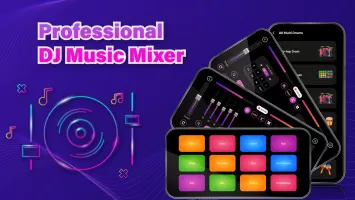
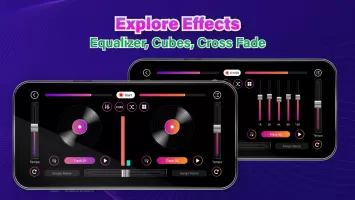

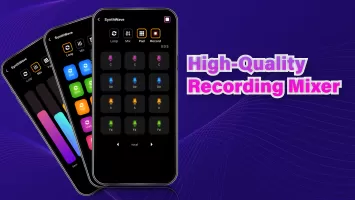
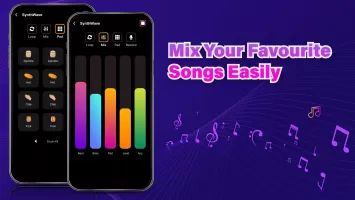


















stunning sound hearing
more options suggested
better UI needed